Tis the season to be marmalading and what better a way of spending your locked-down hours than preparing a two-stage chunky dark marmalade? Imagine your friends’ delight when you deliver to them a jar of this delicious breakfast fodder. Imagine.
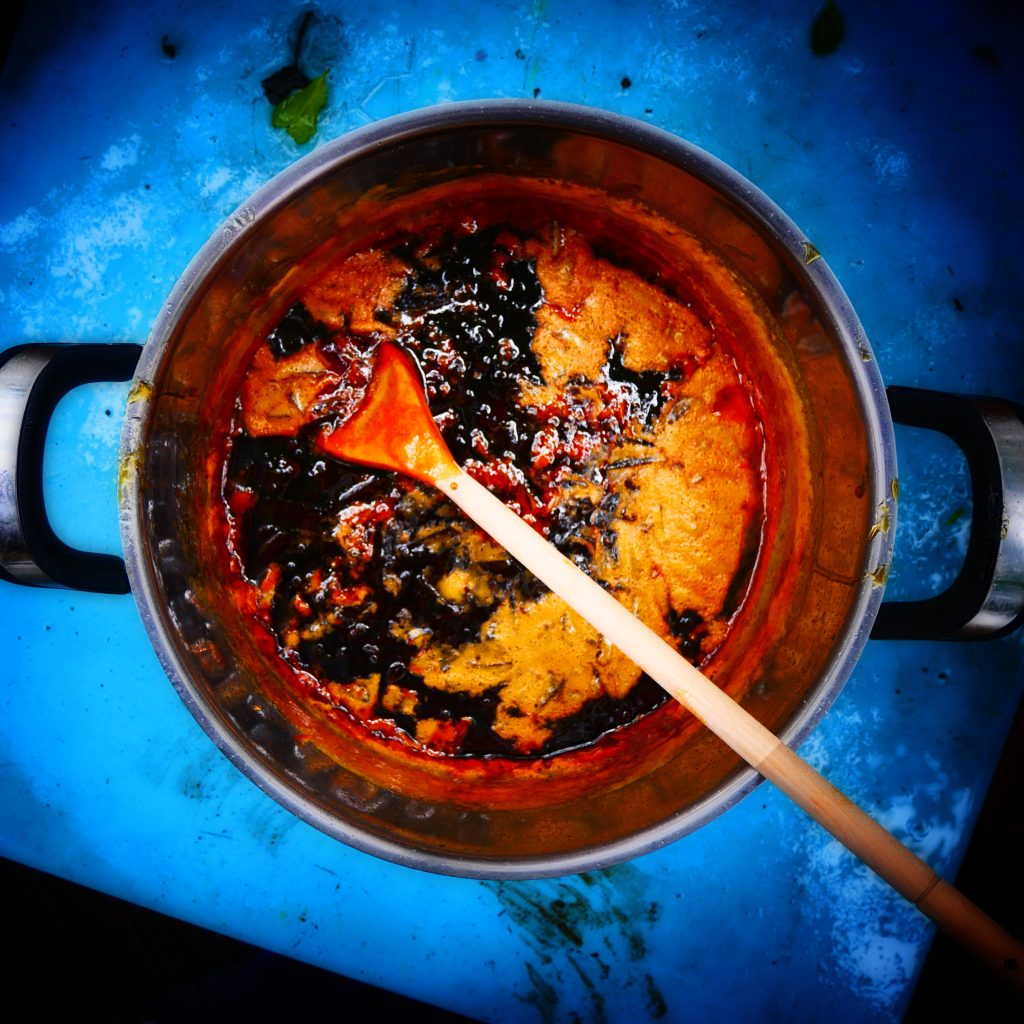
Preparation time: 10 minutes
Cooking time: 6 to 7 hours, spread over two days
Skill level: easyish
Ingredients
- Seville oranges – 1.35kg
- 2 lemons
- granulated sugar – 2.7kg
This is a two-stage process, ideally spread over two days, so make sure you have sufficient time set aside.
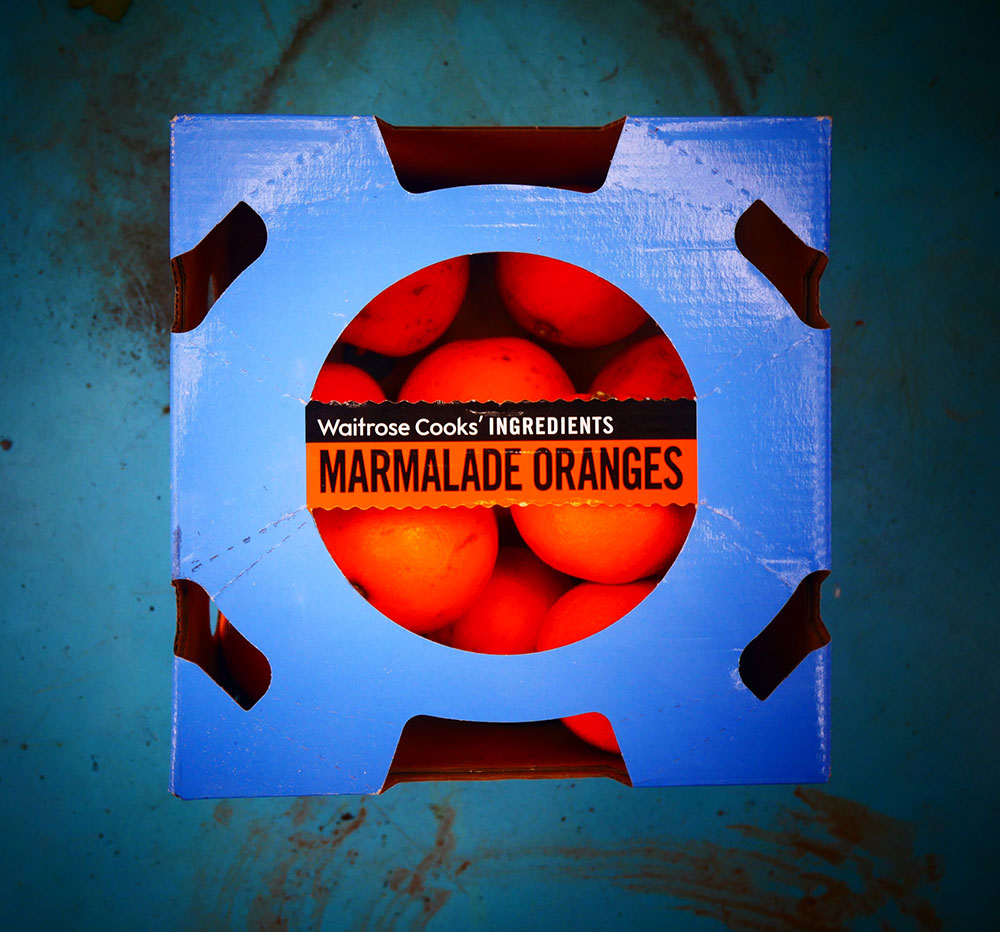
Day 1
Gently scrub the oranges and lemons and place in a preserving pan along with 3 litres of water. Bring up to a simmer then seal the pan with a double layer of tin foil and continue to gently simmer for 3 hours. The idea is to poach the fruit without any of the liquid evaporating. Remove the pan from the heat and cool the contents until you can handle them.
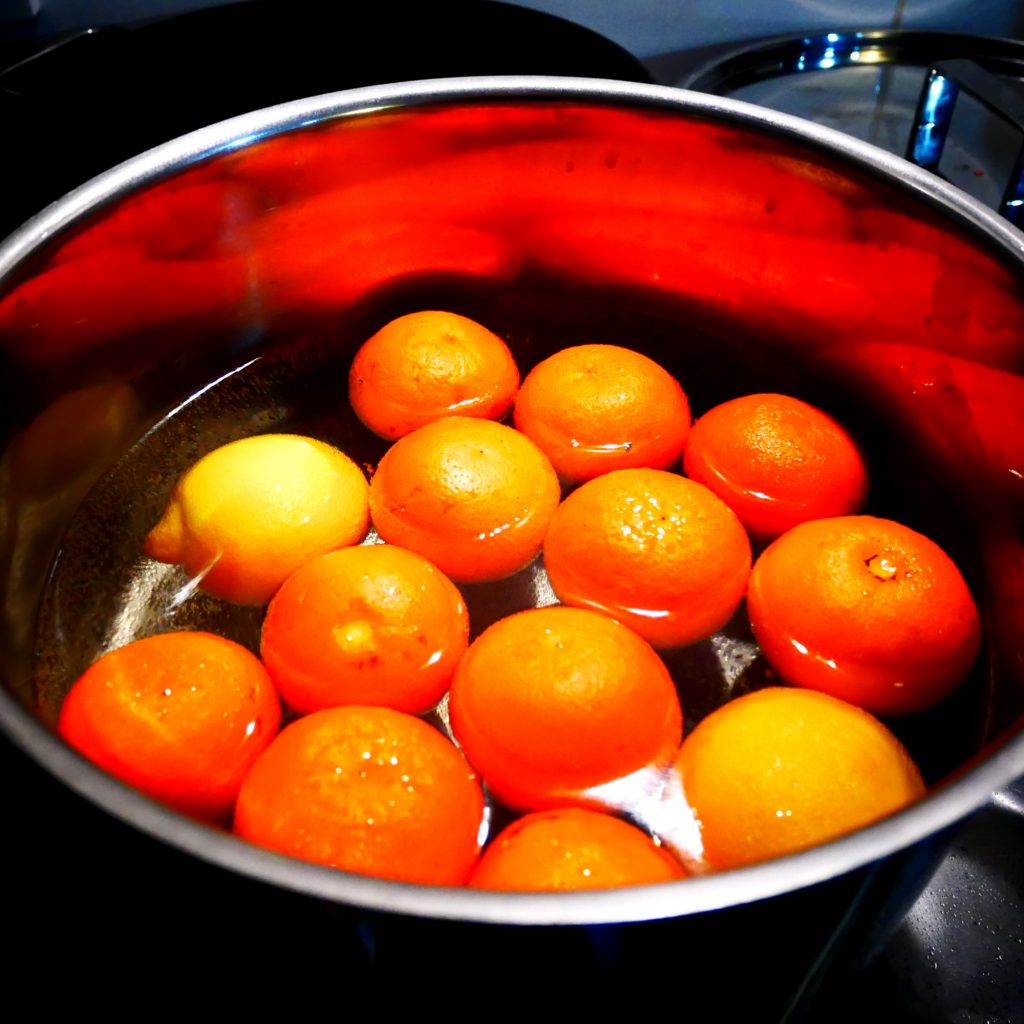
Place a colander over a large bowl and, using a draining spoon, lift the fruit out of the liquid. Cut the oranges in half and scoop out all the inside flesh and pips, putting them straight into a medium-sized saucepan. Do the same with the lemons, but discard the peel.
Next, add 570 ml of the poaching liquid to the fruit pulp, place the saucepan over a medium heat and simmer for 10 minutes.
Prepare a large nylon sieve, lined with muslin, and place it over a bowl, then strain the contents of the saucepan through the sieve. Leave it to cool and drip through.
Meanwhile, cut the halves of peel into quarters and then into chunky strips according to how you like your marmalade, once sliced add them back into the preserving pan.
When the pulp has cooled, gather up the corners of the muslin and twist it into a ball, then squeeze all of the juices into the preserving pan. Be sure to squeeze as hard as you can so that every last bit of juice is extracted and you’re just left with the fruit membranes, which can now be jettisoned. Leave overnight, covered.
Day 2: Rise early with a spring in your step, for today you complete the best marmalade ever. Preheat the oven to 170°C.
Pour the sugar into a large roasting tin lined with foil and place in the warm oven for ten minutes to heat through.
Next, put the preserving pan and its contents on a gentle heat. As soon as it starts to warm add the heated sugar. Using a large wooden spoon, stir the marmalade, keeping the heat fairly low, until all the sugar crystals have fully dissolved. Do NOT let the marmalade boil until all the sugar is completely dissolved. Regularly check the back of the wooden spoon as you stir and, when you are sure there are no more crystals left, turn up the heat and let the marmalade bubble away gently – it can take between 3 and 4 hours for it to darken and develop its rich flavour.
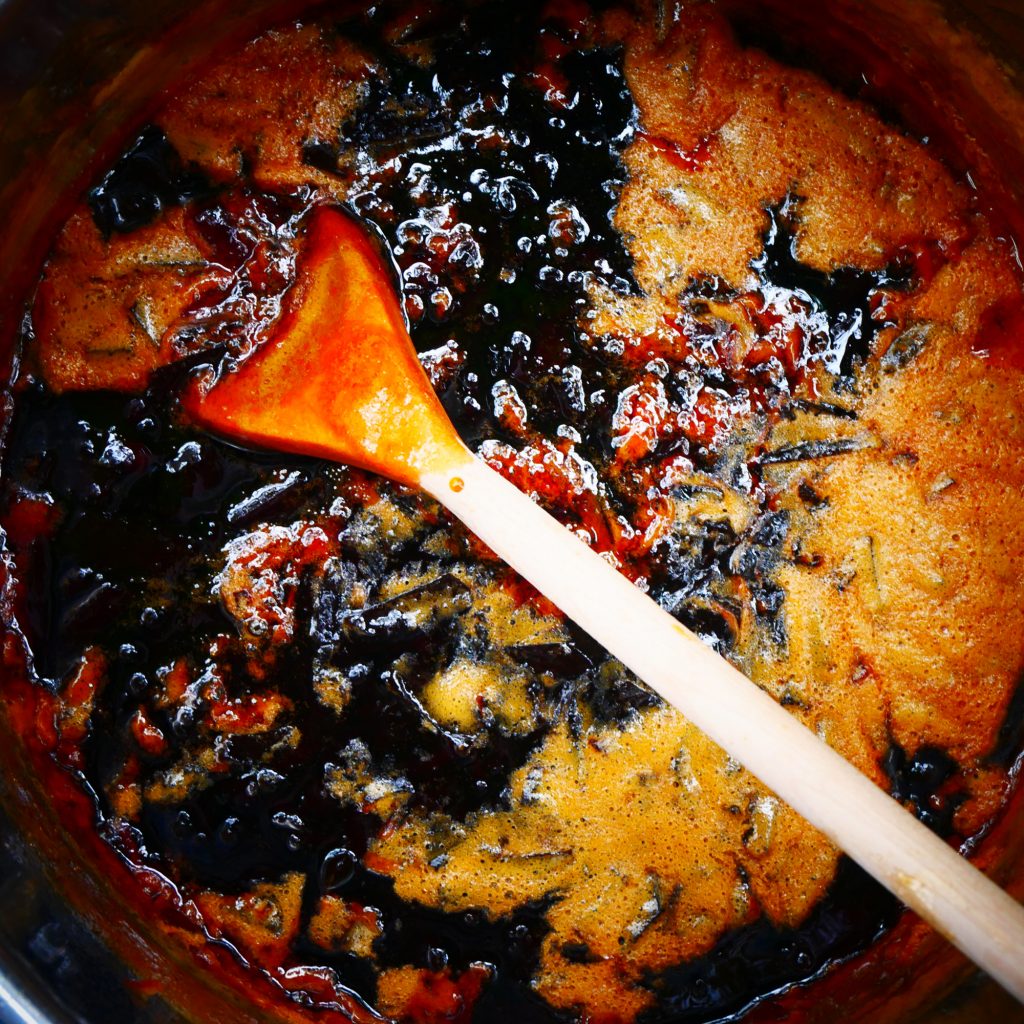
When the marmalade has been cooking for 2½ hours put a small flat plate in the fridge. After 3 hours it’s time to starting testing your marmalade (fronted adverbials and fractions). Take a teaspoonful of marmalade from the pan and place on a chilled plate. Allow it to cool for a minute back in the fridge, then push it with your finger; if a crinkly skin forms, it has reached setting point; if not, continue cooking and do more testing at 15-minute intervals.
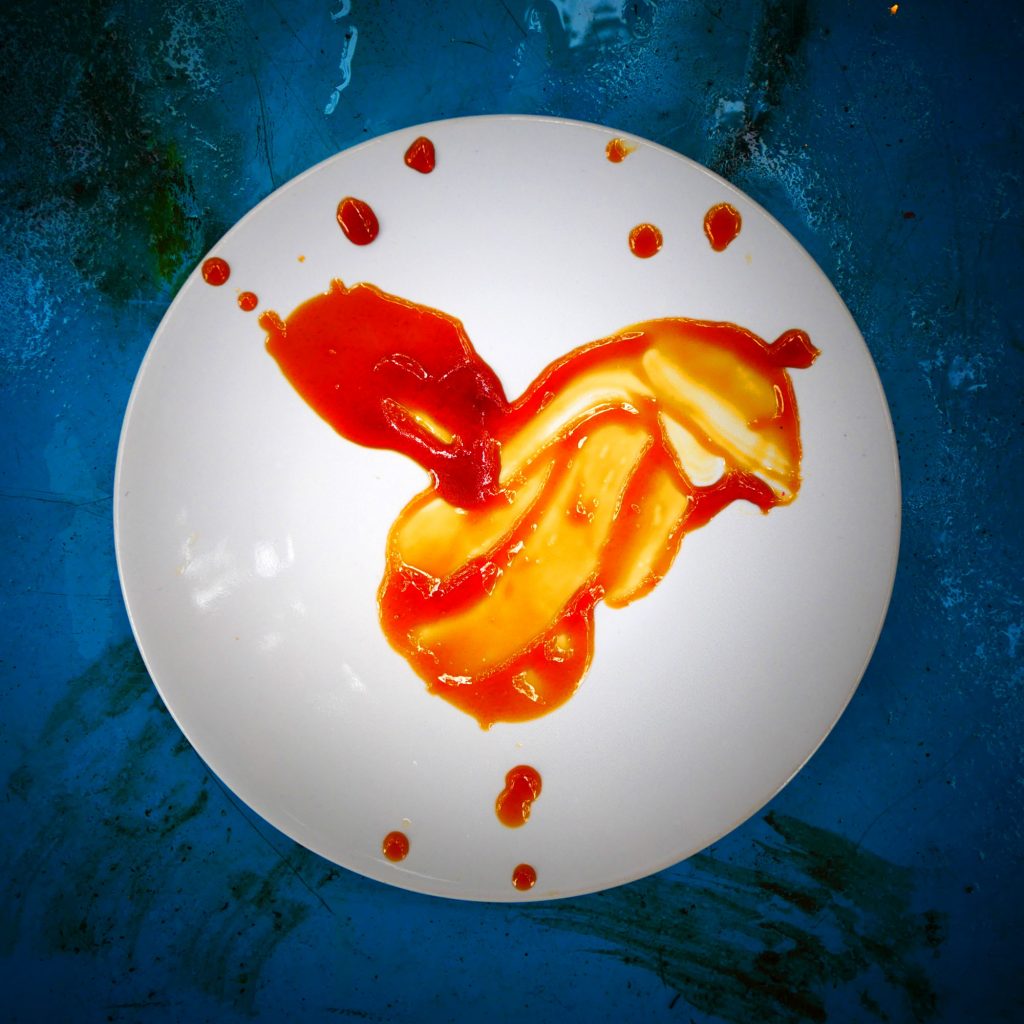
When it has set, leave the marmalade to cool for 30 minutes before carefully ladling into jars that have been sterilised then warmed in a medium oven. Seal the jars with waxed discs while they are still hot, then add the lid when cold. And add a rudimentary label identifying your great work.
Verdict: It truly is the best marmalade ever. Caveat. This is exactly how I like my marmalade and have long searched for a way of achieving its dense, dark, thick peel almost solidity.
The more experimental marmalade makers amongst you might like to try this Tri-citrus variety, or for the more conventional, this equally tasty Traditional option.
Drink: Yorkshire Gold.
Entertainment: Radcliffe and Maconie on 6, chatting crisps and jazz Sabbath.

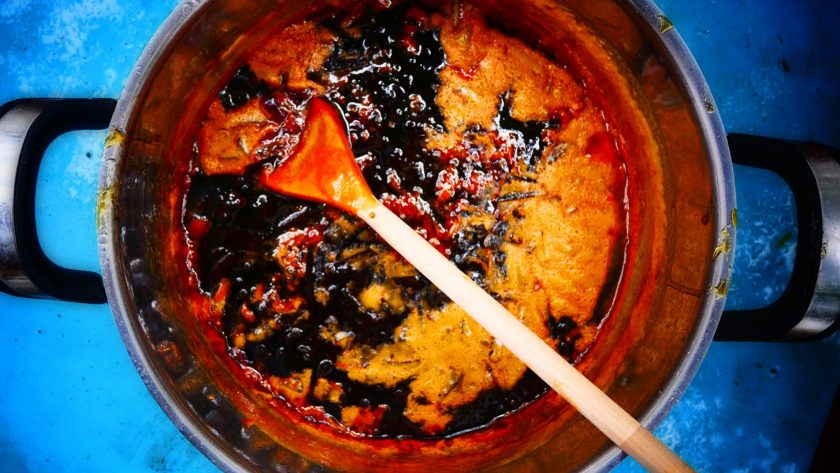

Home made and caramelized. Mouth watering.